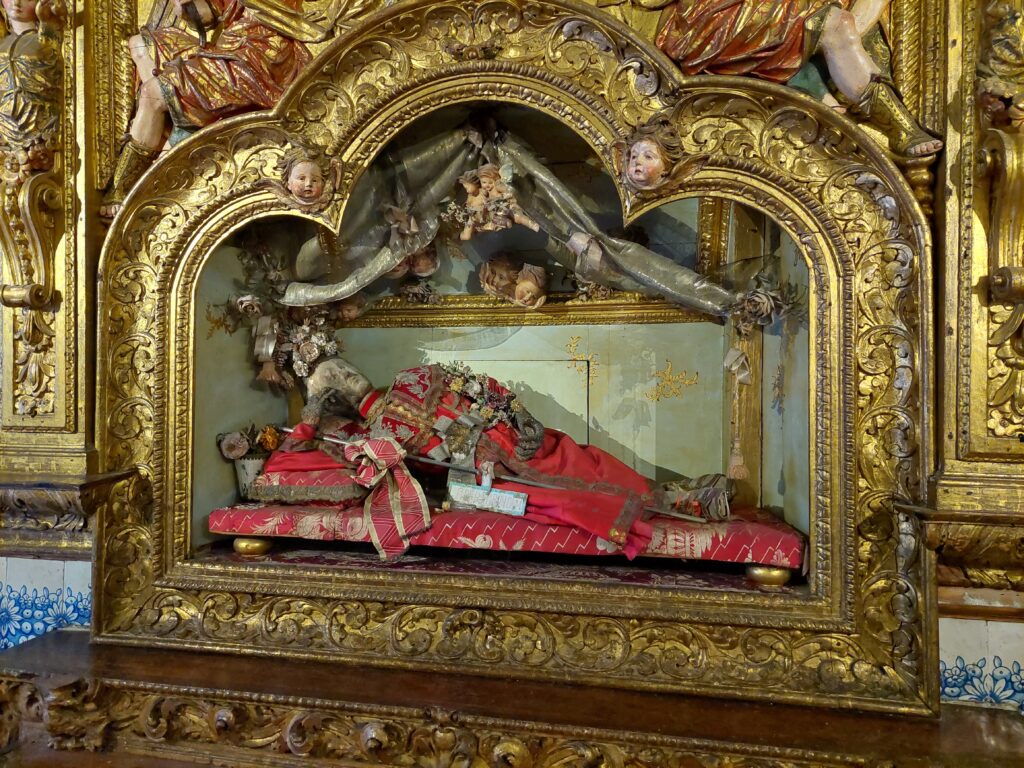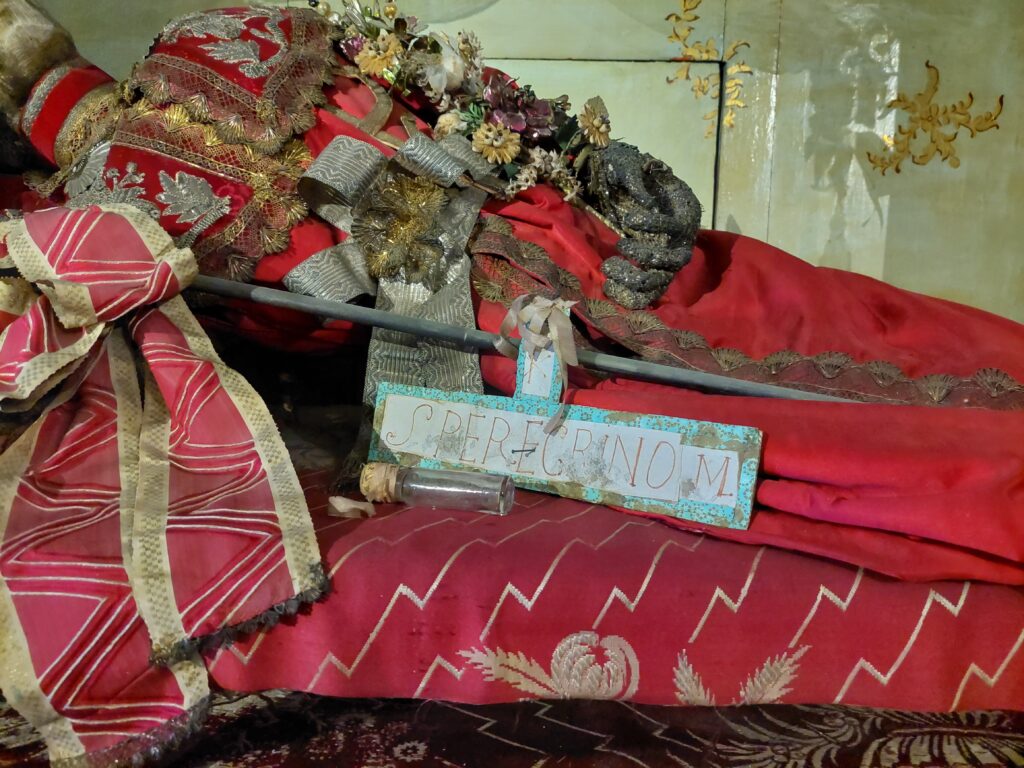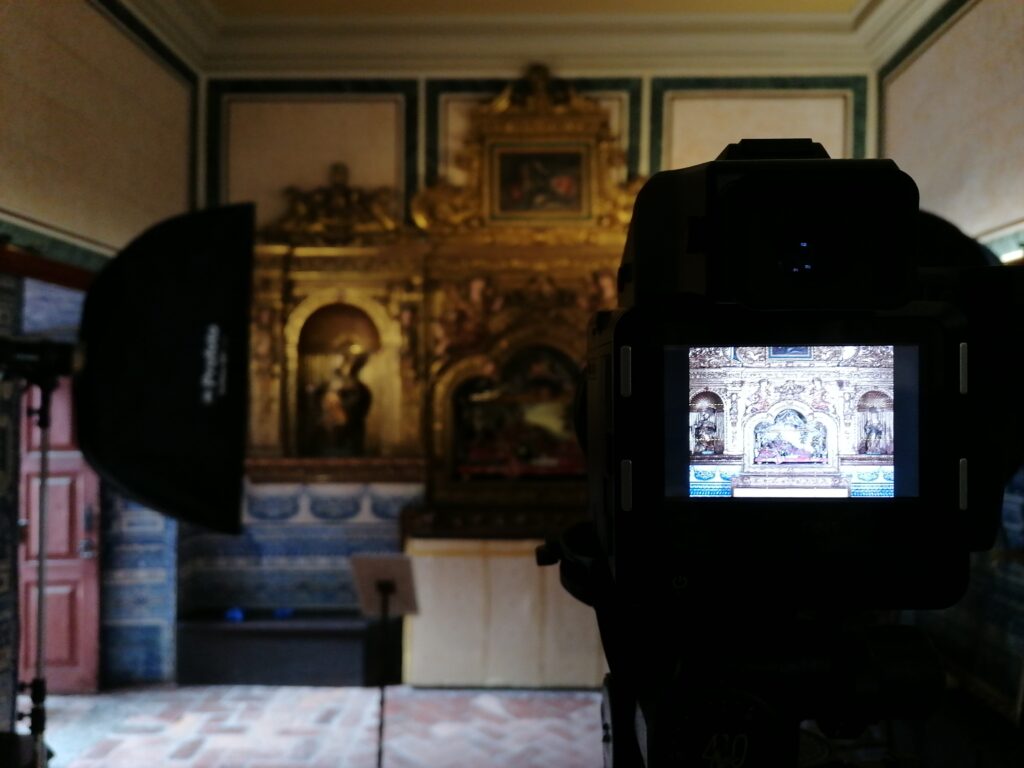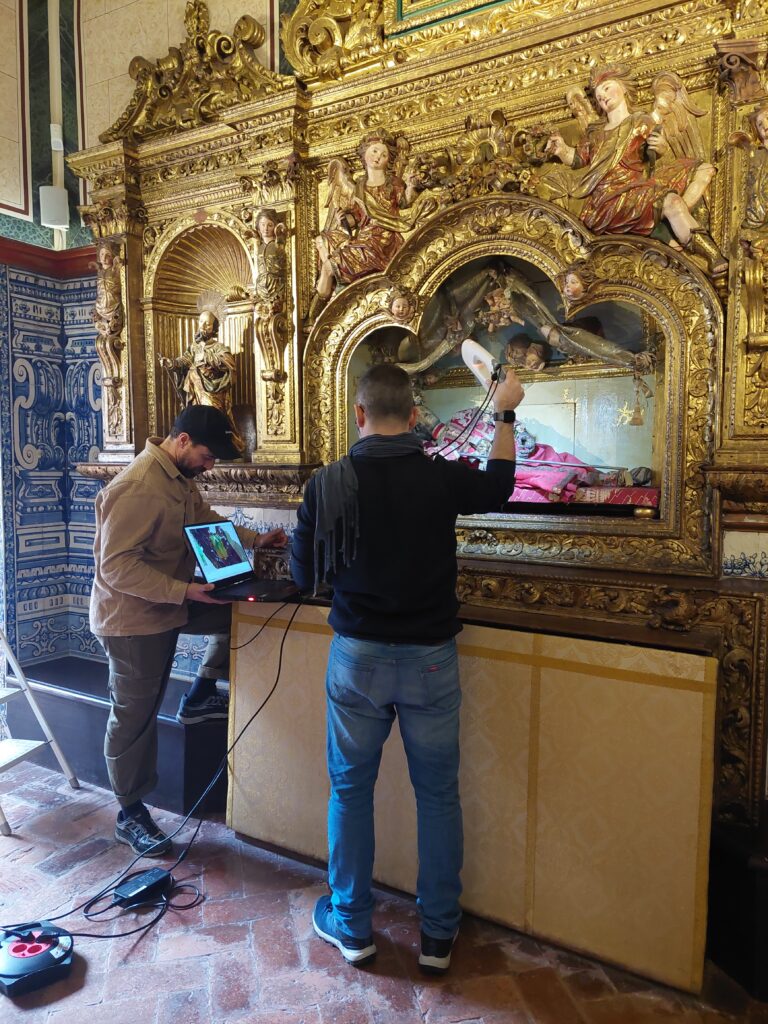St Peregrino
The simulacrum of St Peregrino, dated 1703, is the earliest known martyr’ simulacrum documented in Portugal. It is housed in a purpose-built reliquary altarpiece in the lower choir of the Igreja de Nossa Senhora da Conceição dos Cardaes, Lisbon.
The simulacrum is dressed in a long red tunic richly decorated with metallic thread embroidery and gold and silver trimmings. The face is formed by overlapping layers of silk gauze, with subtle modeling at the nose, lips, and chin. He wears a crown of vibrant, polychrome flowers and holds a metallic staff, which rests beside his body. The simulacrum lies on its right side, with the torso and head slightly elevated. The right elbow rests on a red cushion, supporting the head with the hand. The left arm follows the body and holds a bouquet of varied flowers, while the hand rests gently on the hip. The hands are covered with metallic lace, and the feet—wrapped in gauze—wear simple strap sandals. The simulacrum lies on a bed covered in matching red fabric.



A paper cartouche placed beside the body bears the inscription “S. PEREGRINO M.”, topped by a Christogram. The interior of the display is adorned with small ceramic vases filled with paper and metal-leaf floral arrangements, evoking an atmosphere of devotion and care.
In February, a technical study was carried out including high-resolution photography, X-ray imaging, endoscopic observation, sample collection, and a superficial mechanical cleaning to support future conservation and research.



